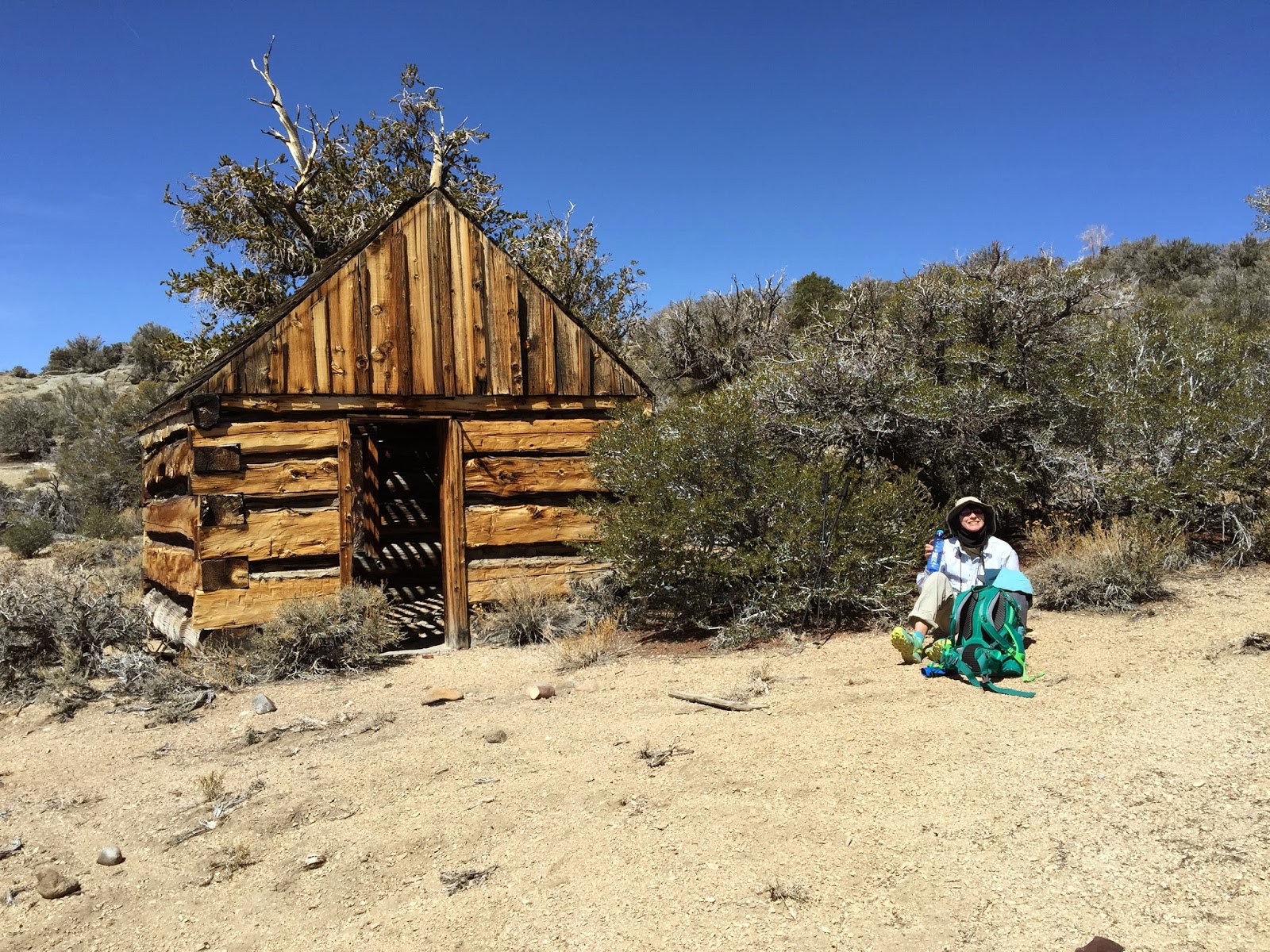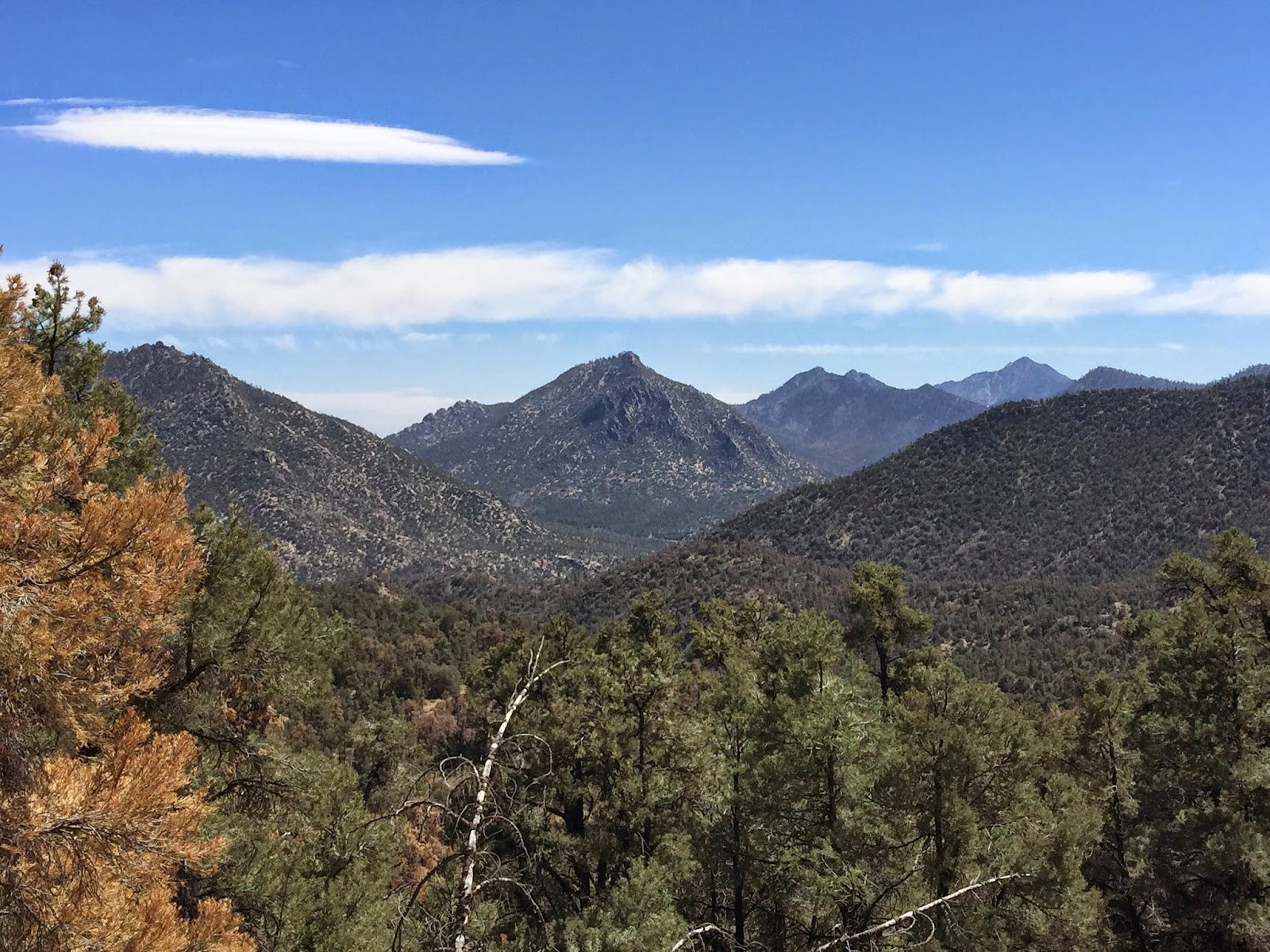Since we stayed in Lone Pine Saturday evening, we decided to do some Sierra hiking on the way home this morning. A trail that's been on our radar was Olancha Pass. This trail leaves from the Sage Flats road end at an elevation of 5,600 feet and climbs to 9,200 feet at the pass in about 6 miles. The trail was in remarkably good shape considering how little attention it gets, and parts of it are sometimes used to move cattle into and out of the high country.
 The trailhead is in a large oak grove that we didn't take the time to bird much, but did hear Oak Titmouse almost immediately after starting out. A couple of Ruby-crowned Kinglets were also making themselves heard. Leaving the oak grove, the trail hugs the side of a deep canyon for several miles, quickly gaining elevation on a good trail. Two Western Bluebirds were easy to see a short distance up the trail.
The trailhead is in a large oak grove that we didn't take the time to bird much, but did hear Oak Titmouse almost immediately after starting out. A couple of Ruby-crowned Kinglets were also making themselves heard. Leaving the oak grove, the trail hugs the side of a deep canyon for several miles, quickly gaining elevation on a good trail. Two Western Bluebirds were easy to see a short distance up the trail.  |
| The trail low down |
The birding really got interesting when Susan almost literally kicked up two Common Poorwills that were roosting on the trail edge at about 7,400 feet elevation. Both flushed out from under her feet and landed a short distance away for excellent viewing. Needless to say it was quite a surprise.
 |
| "Cow Driveway" |
At one point the hiking/equestrian trail diverges from the "cow driveway." That was certainly not a problem for us as the regular trail was quite pleasant and the "driveway" looked pretty torn up as would be expected.
 |
| Canyon with Oaks and Pines |
 |
| Olancha Pass |
 |
| Summit Meadow |
After walking along the meadow edge for a while we reversed our course down the mountain. At 7,500 feet elevation we finally heard then located a species we were hoping for - Wrentit. The elevation seems high for this species, but the habitat was perfect for them with a mixture of manzanita and oak scrub on a dry hillside.
 |
| Summit Meadow "Horse" |
The view back down canyon was spectacular with Haiwee Reservoir, Little Lake, the Argus Range, and Owens Lake all showing at different times along the trail.
 |
| Owens Lake |
 |
| Argus Range, Southern Inyo Mts., and Haiwee Res. |
Throughout the hike we recorded 58 species of birds! We highly recommend this trail to hardy hikers who want to experience the "East Side" dramatic habitat variation and avian diversity that goes with it.
eBird Lists:
http://ebird.org/ebird/view/checklist?subID=S23079037
http://ebird.org/ebird/view/checklist?subID=S23079040
http://ebird.org/ebird/view/checklist?subID=S23079039
Track: https://www.gaiagps.com/public/tD7WzqU7Kzw7z4zVhTL5sp18//

































